This Estate Find might set the record for the most frames taken to capture what I was after, but that’s because I was after some pretty specific things that are very hard to see, from a subject that’s difficult to work with.
In the past week, as if a switch has been thrown, there’s a section of the property that sports large numbers of this week’s find, which could be a lot worse if they all get to be the size of a typical adult. We’re talking about these little monsters:
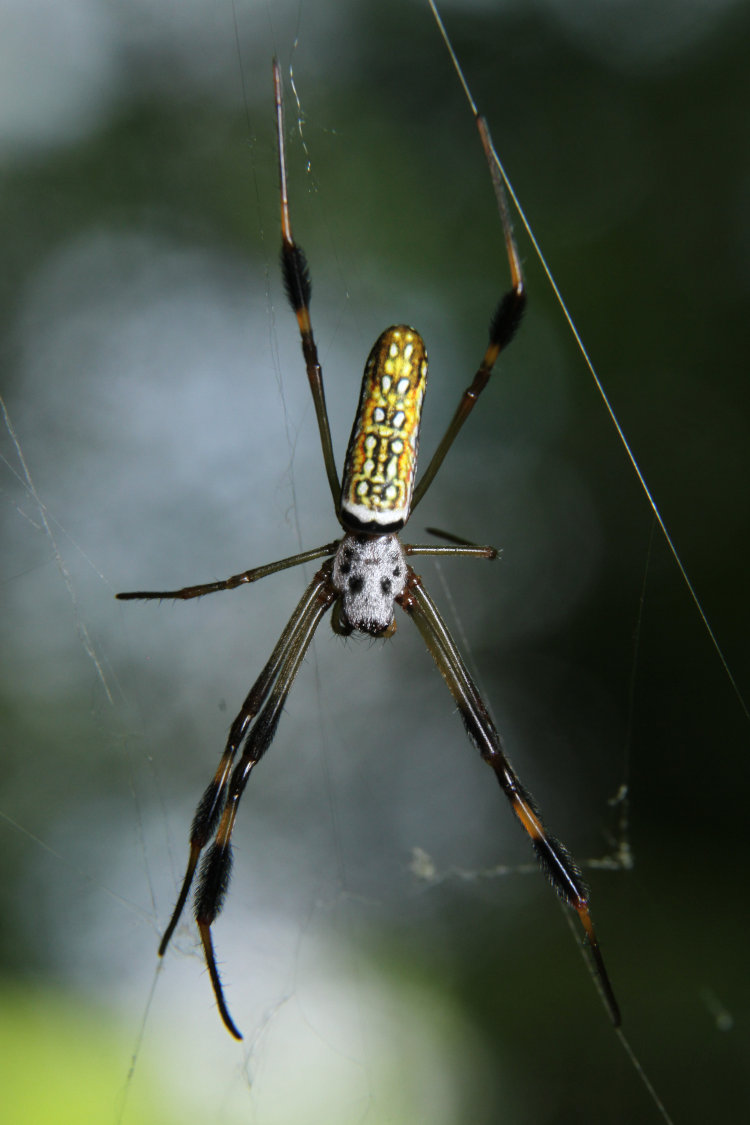
As massive as it appears here, it’s actually not, and a tiny fraction of what they can achieve in adulthood. This is a juvenile golden silk orbweaver (Trichonephila clavipes,) and this specimen, which accounts for all images herein except one, is only 12mm in body length – naturally, this is a bit more when you count leg spread, but it still tops maybe 35mm with that. Compare that to a large adult, which can exceed 100mm in spread, spanning across your palm. I very quickly became aware that the species could be found here, but by mid-fall they had vanished. Spiders typically only live a single year, but curiously, the young usually hatch in late summer to early fall and survive through the winter, quite tiny, until spring when they start to do some serious hunting and put on weight.
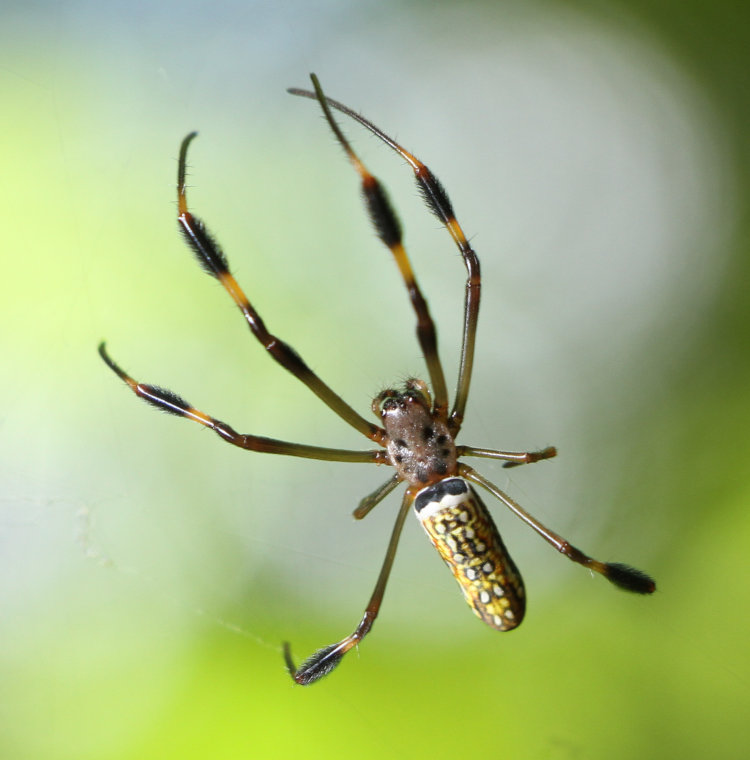
Even at this age/size, you can see why this species is also known as a “banana spider,” as well as a few other colloquial names, and they have the uninviting habit of stringing their large webs between trees at heights of one to six meters, which you can easily become aware of (even if you miss the brilliant spider) because the silk is damn strong – that’s how I located this particular specimen, when I was aiming to use one of three different ones that I’d already plotted. You can also see another trait that makes them easy to identify, which is the tufts of black hair on three pairs of their legs, making the joints look swollen.
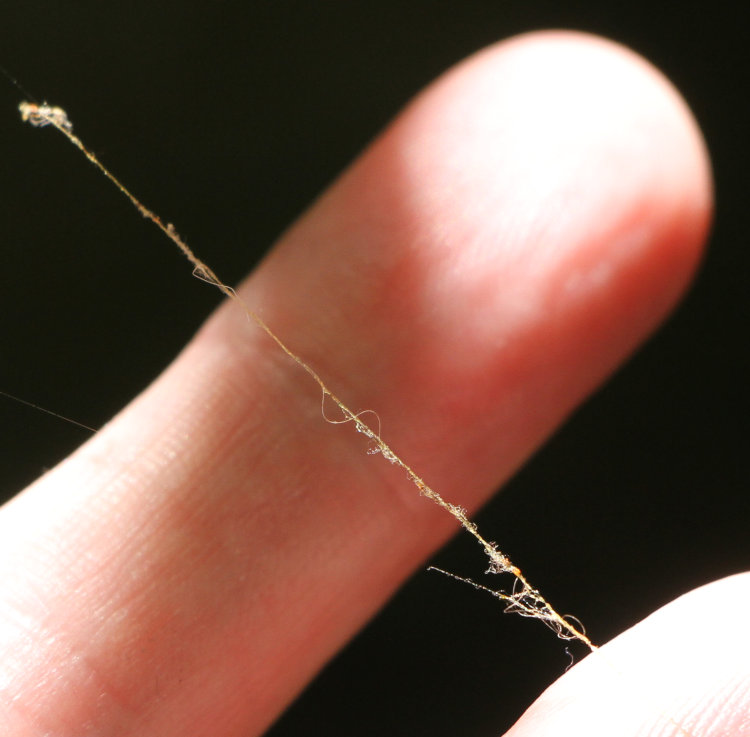
This is a patch of the silk, and it’s clear that it really is yellow, though it often takes the right lighting to reveal this distinctly; I’ve seen plenty of webs and it’s only occasionally visible, not helped at all by the webs usually being seen against the sky.
The ‘orbweaver’ bit means that they make circular, ‘wheel’ webs of course, which as adults can reach two meters in the main part (not counting the anchoring strands which can go a lot further,) but as I discovered, the juveniles at least may make dual-structure webs, surrounding the orb by a random ‘cob’ web, as protection from predators. Like so:
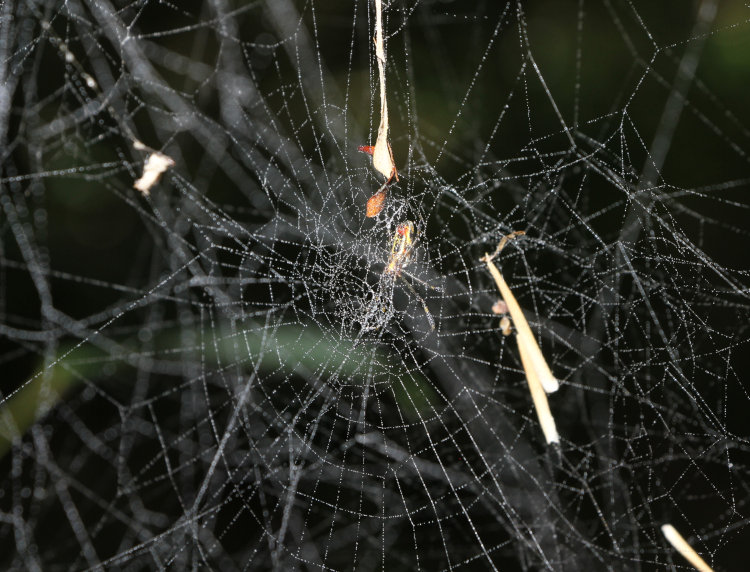
I came prepared to snag an image of this, armed with a misting bottle to highlight the strands – if you look, you can see the orb structure, semi-obscured by the cob structure surrounding it. My guess is that only the orb is sticky silk, so insects won’t get snagged by the outer cob, though it almost certainly connects to the orb so the spider can feel disturbances. This, by the way, is the sole appearance of a second subject. Now we return to the first, who I collected to so detailed photos in controlled conditions within Walkabout Studios. Without the interference of the wind, web strands, poor positions, or crappy lighting, I could capture some of those specific details I mentioned.
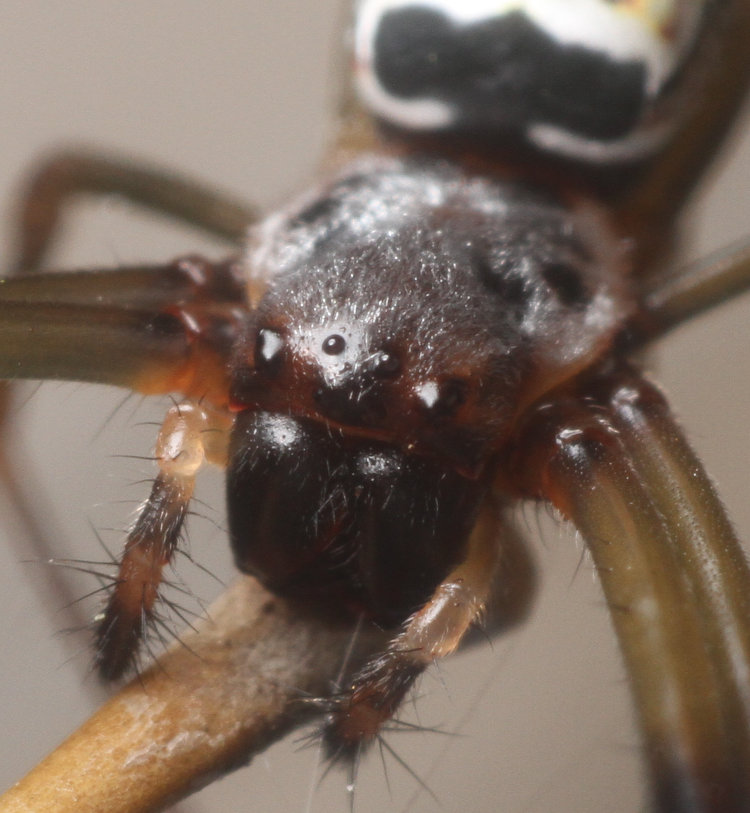
Like the eye arrangement, though it’s only partially visible here. You can make out the posterior median (back middle) eyes here easily, but there are another two below them, facing more forward, and four out on those bumps flanking the visible eyes. You can also see that the silver-grey coloration of the cephalothorax really depends on the light angle, though from nearly every ‘normal’ view, this will appear silver-white.
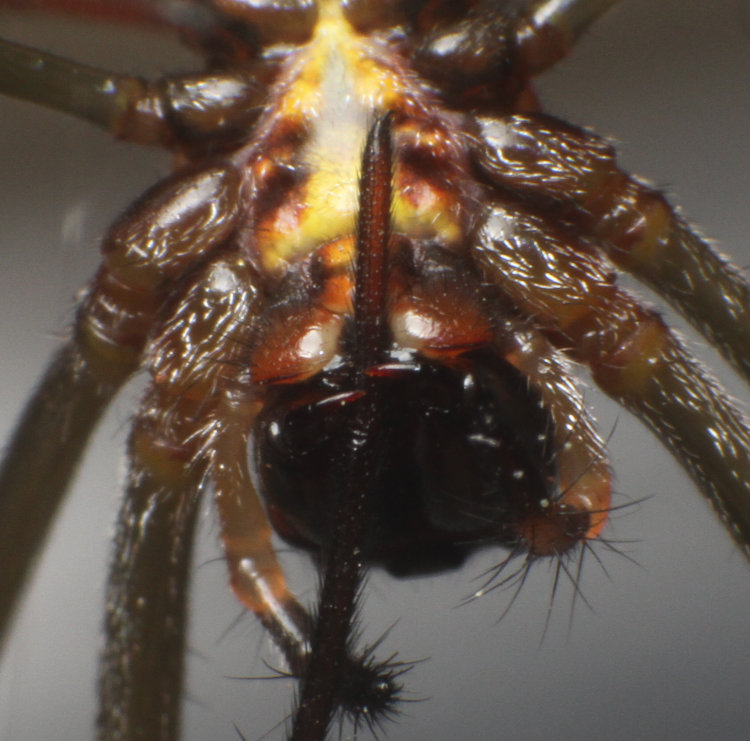
Now we go underneath, and despite countless attempts and digging out the ringflash for the first time in years, this was the best view that I achieved of the fangs; you can just make out the reddish-brown tips of them overlapping the leg while the spider cleans it (the spider is facing down in this pic.) My specimen was more-or-less free to go where she chose, as long as she chose to remain on the bamboo branch that I’d provided her, while I attempted to get the angle I needed. Her tendency was to hang from the underside and head down on any branch she paused upon, and at these magnifications, focus distance is critical – about a millimeter for sharp focus, and I can easily sway a lot more than that while “holding perfectly still.” She’d pause, and I’d gently rotate the branch to have her face the way I wanted, and she would usually maneuver back into the same position as I did so.
This was also the most ‘retro’ Estate Find so far, because in addition to the ringflash, I also dug out the Mamiya 45mm lens to use reversed – there’s a reason for this, and I’ll get to that in another post. These closeups were a combination of the reversed 45mm and the reversed 28-105, which allows greater flexibility in working distance and magnification, at the cost of a) permanently being fixed at f16, thus making the viewfinder view quite dark and necessitating bright focusing lights, and b) having waayyy too short depth of field, meaning focus distance is absolutely critical. Lots of shots are getting tossed.

This is why I the ringflash has been stored away for so long. The softbox has its own issues, mostly that it still throws shadows that can hide crucial details, closely followed by, it’s big and can interfere with things like, say, a bamboo branch that your subject is perched upon (working distance for these images are a hand-width to a hand-length.) The ringflash is attached to the end of the lens and illuminates the subject evenly, but this often takes away shadows that provide the shape and textures, and it does this: reflects in little circles from shiny surfaces like four of the spider’s eyes. You can make out two more eyes because of the ringflash though, on those humps flanking the center eyes, aiming wide and down (in relation to the spider.) I had intended the ringflash to illuminate the fangs better, but after I’d switched, the spider refused to give me the same poses.
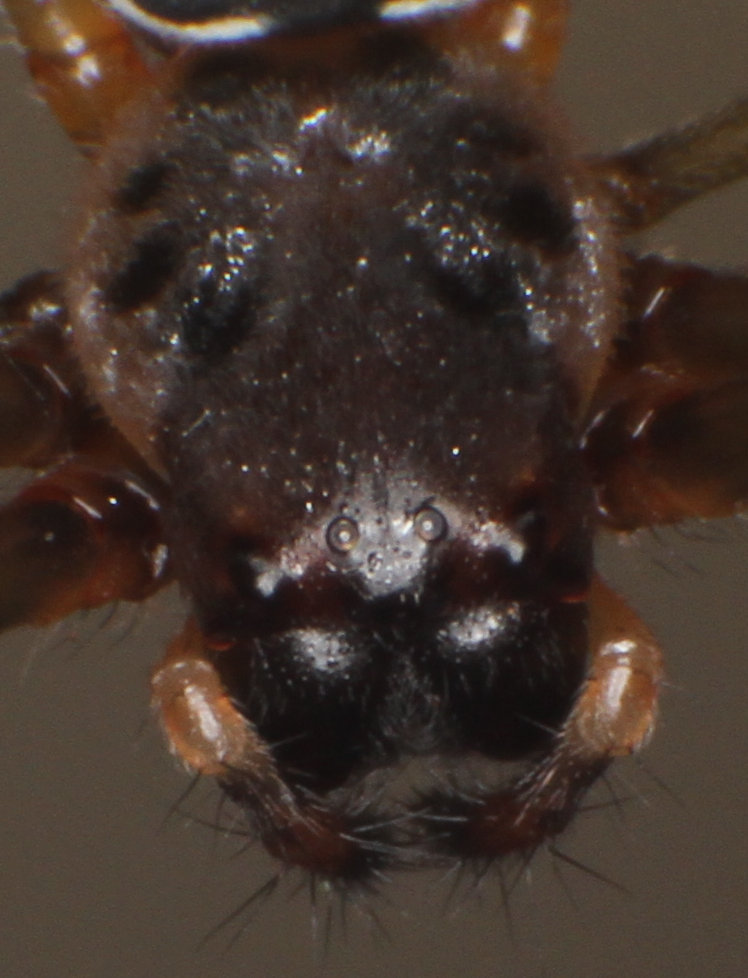
And a top-down shot to close out the post. The ring reflection is still there, but the angle is right now to get a reflection from the retinas of the spider, brighter and thus appearing like a pale grey pupil. By this point I figured I’d had enough frustration, since the multiple shooting sessions with lens and lighting changes had spanned 83 minutes and I still had to download and edit the shots and write the post. That contains closeup images of ooky spiders and thus too few people will even read…



















































